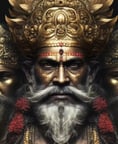In Hinduism, Brahma is not typically understood to have incarnations in the same way as Vishnu. However, he is considered to be the creator god, and in some contexts, his creative energy or aspects are seen as manifesting in various forms.
Brahma's primary function is to create the universe. He is often depicted with four heads, symbolizing his omniscience and ability to oversee creation from all directions.
Incarnations as a Concept:
While Brahma doesn't have a series of major incarnations like Vishnu, the concept of avatars, or divine manifestations, is relevant to him. Brahma's creative energy and aspects can be seen as manifesting in various forms, such as:
(1)Prajapatis (Creators): Brahma is considered the father of the Prajapatis, who are the creators of different aspects of the universe, such as beings, animals, and plants.
(2)Manasaputras (Mind-Born Sons): Brahma is also associated with the Manasaputras, who are divine beings born from his mind and are important figures in creation
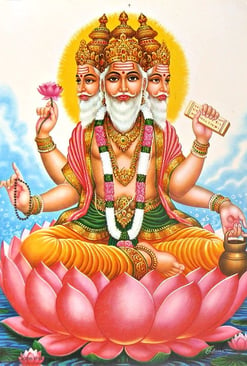

Avatars of Brahma : In Dasam Granth, second scriptures of Sikhs written by Guru Gobind Singh, mentioned seven Brahma Avatars.
(6)Khat Brahma likely refers to Brahma's avatars or incarnations, particularly the six sages (Khat) associated with Brahma. These sages are considered to be divine incarnations of Brahma, representing different philosophical schools of thought.
(1)Valmiki was a legendary poet who is celebrated as the traditional author of the epic Ramayana, based on the attribution in the text itself. He is revered as Ādi Kavi, the first poet, author of Ramayana, the first epic poem. The Ramayana, originally written by Valmiki, consists of 24,000 shlokas and seven cantos.
(2)Kashyapa (Sanskrit: कश्यप, IAST: Kaśyapa) is a revered Vedic sage of Hinduism.[1] He is one of the Saptarishis, the seven ancient sages of the Rigveda. Kashyapa is the most ancient and venerated rishi, along with the other Saptarishis,
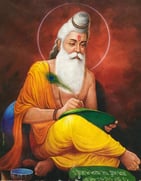

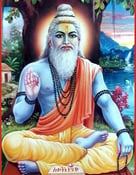

(3)Shukra (Sanskrit: शुक्र, IAST: Śukra) is a Sanskrit word that means "clear" or "bright". It also has other meanings, such as the name of a sage who was the preceptor of the asuras and taught them the Vedas.[3] In medieval mythology and Hindu astrology, the word refers to the planet Venus, one of the Navagrahas.[4]

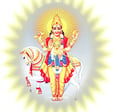
(4)Vyasa or Veda Vyasa, also known as Krishna Dvaipayana Veda Vyasa, is a rishi with a prominent role in most Hindu traditions. He is traditionally regarded as the author of the epic Mahābhārata, where he also plays a prominent role as a character.

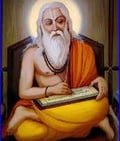
(5)Kalidasa was a Classical Sanskrit author who is often considered ancient India's greatest poet and playwright. His plays and poetry are primarily based on Hindu Puranas and philosophy. His surviving works consist of three plays, two epic poems and two shorter poems.


